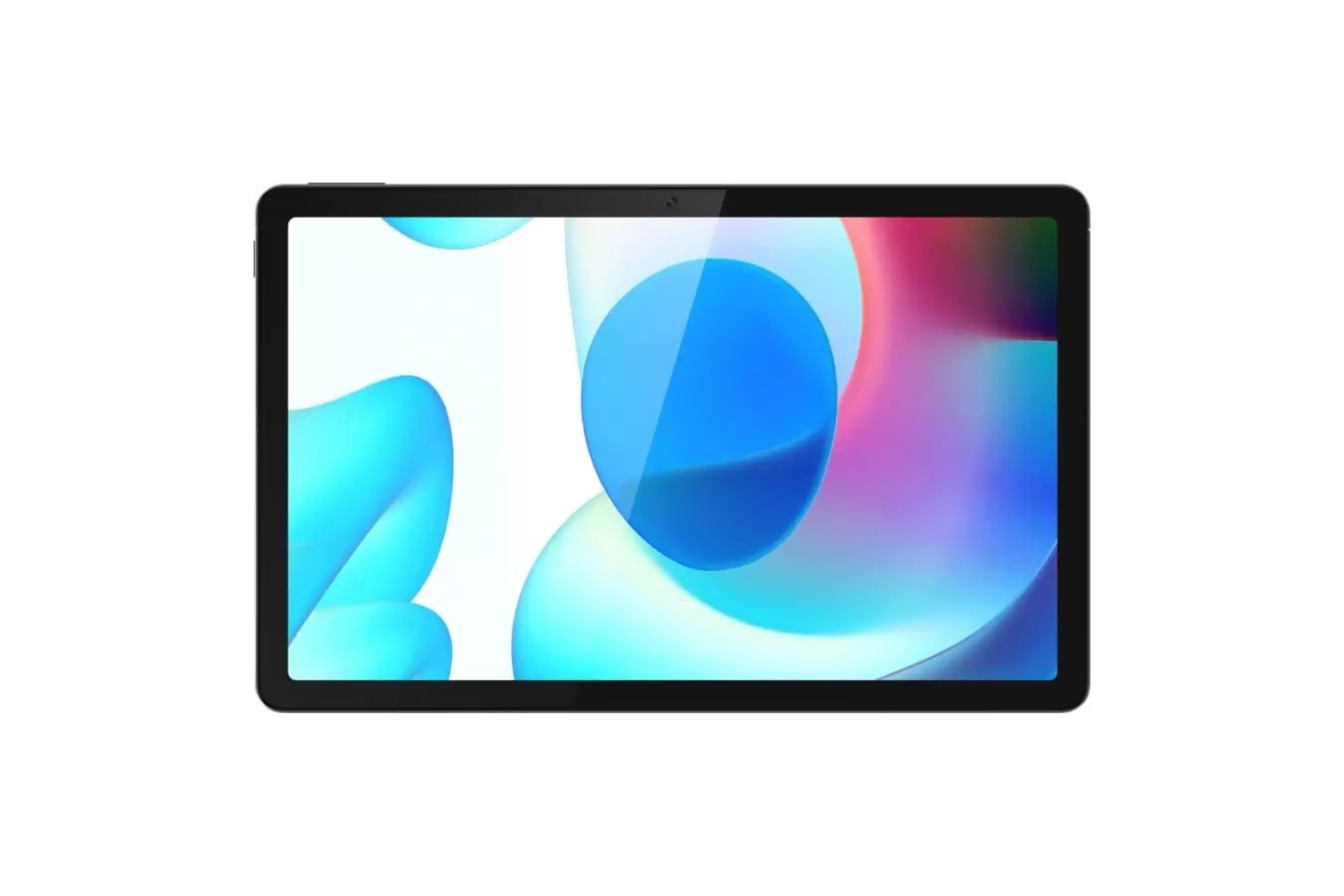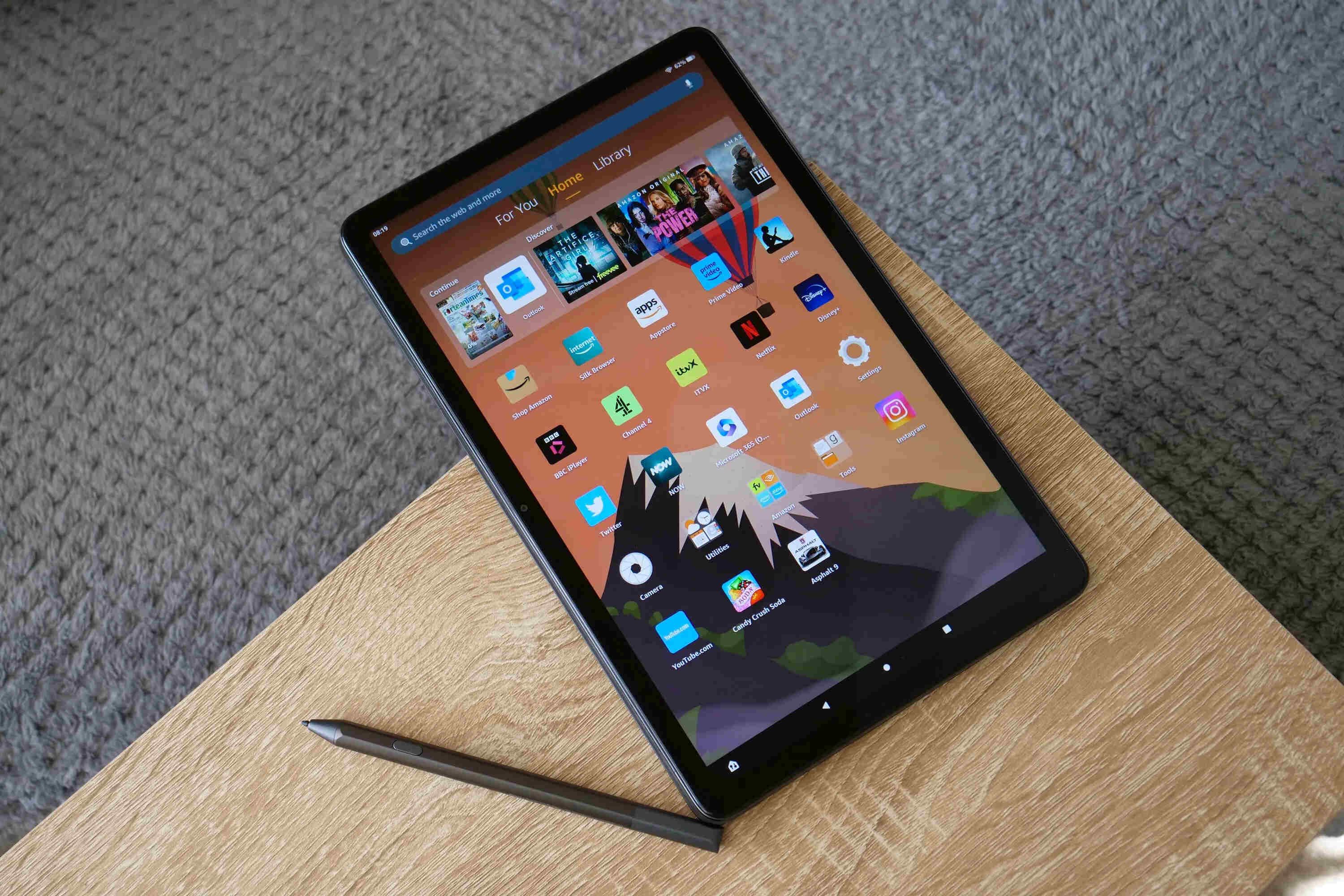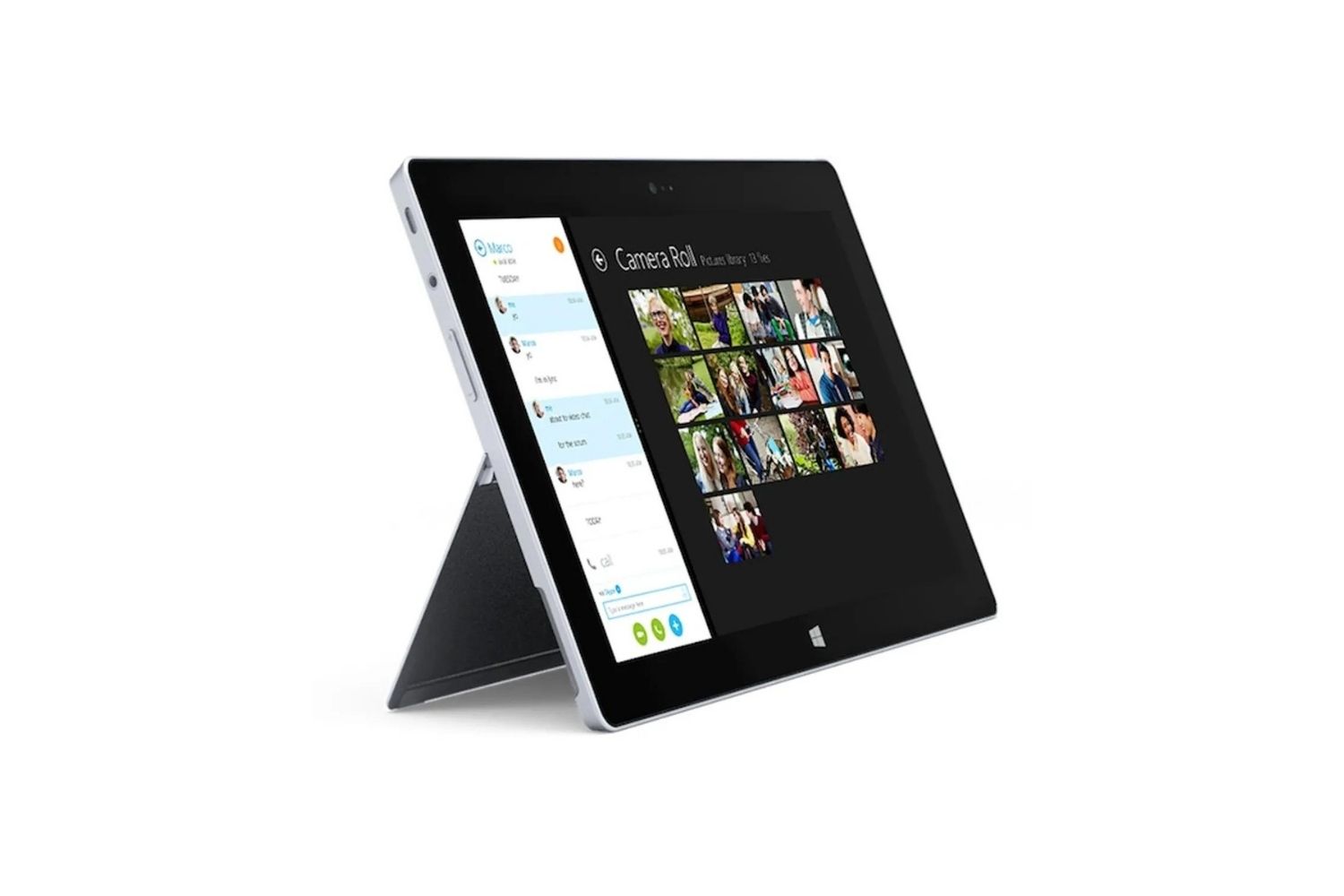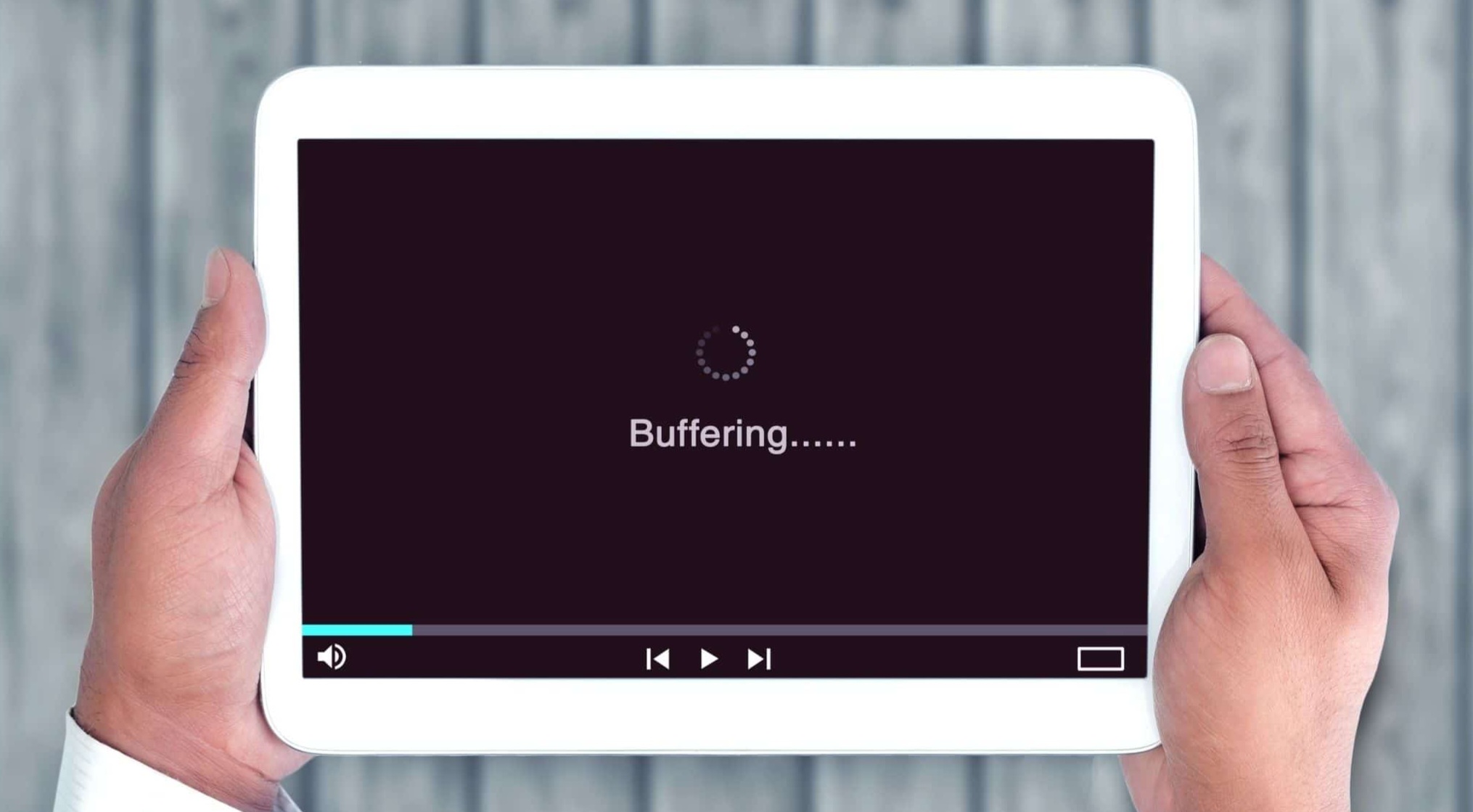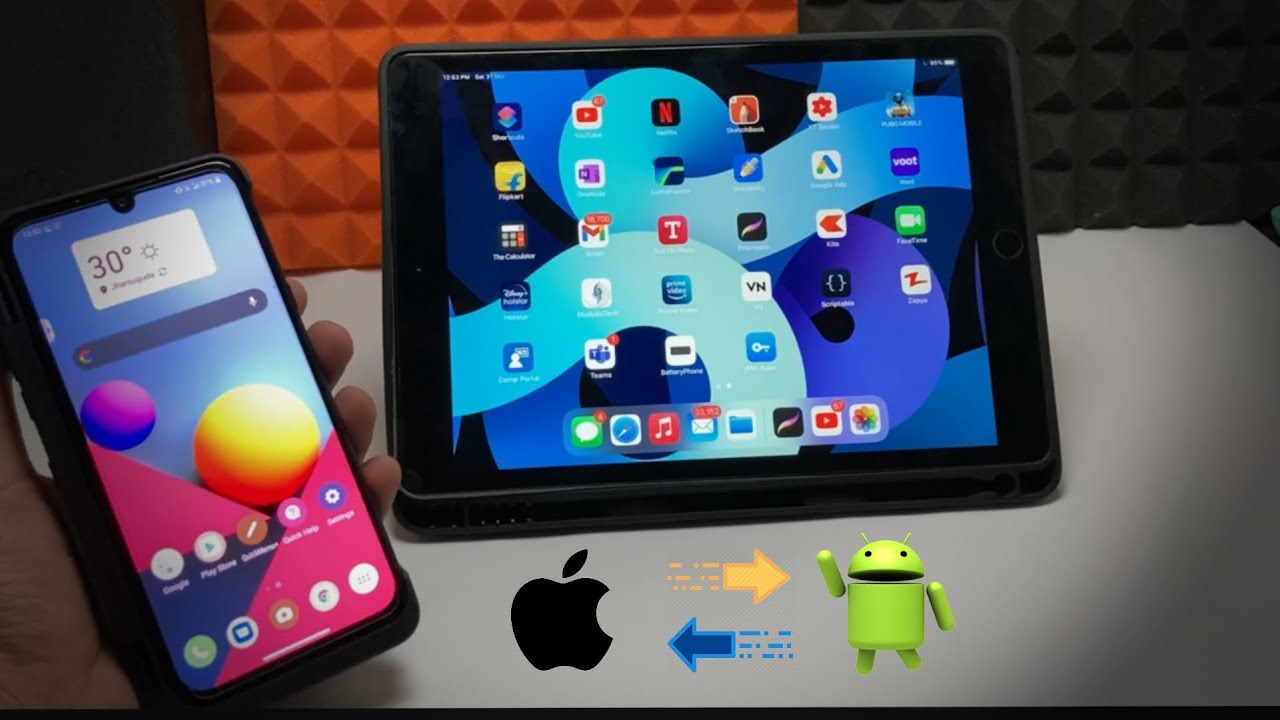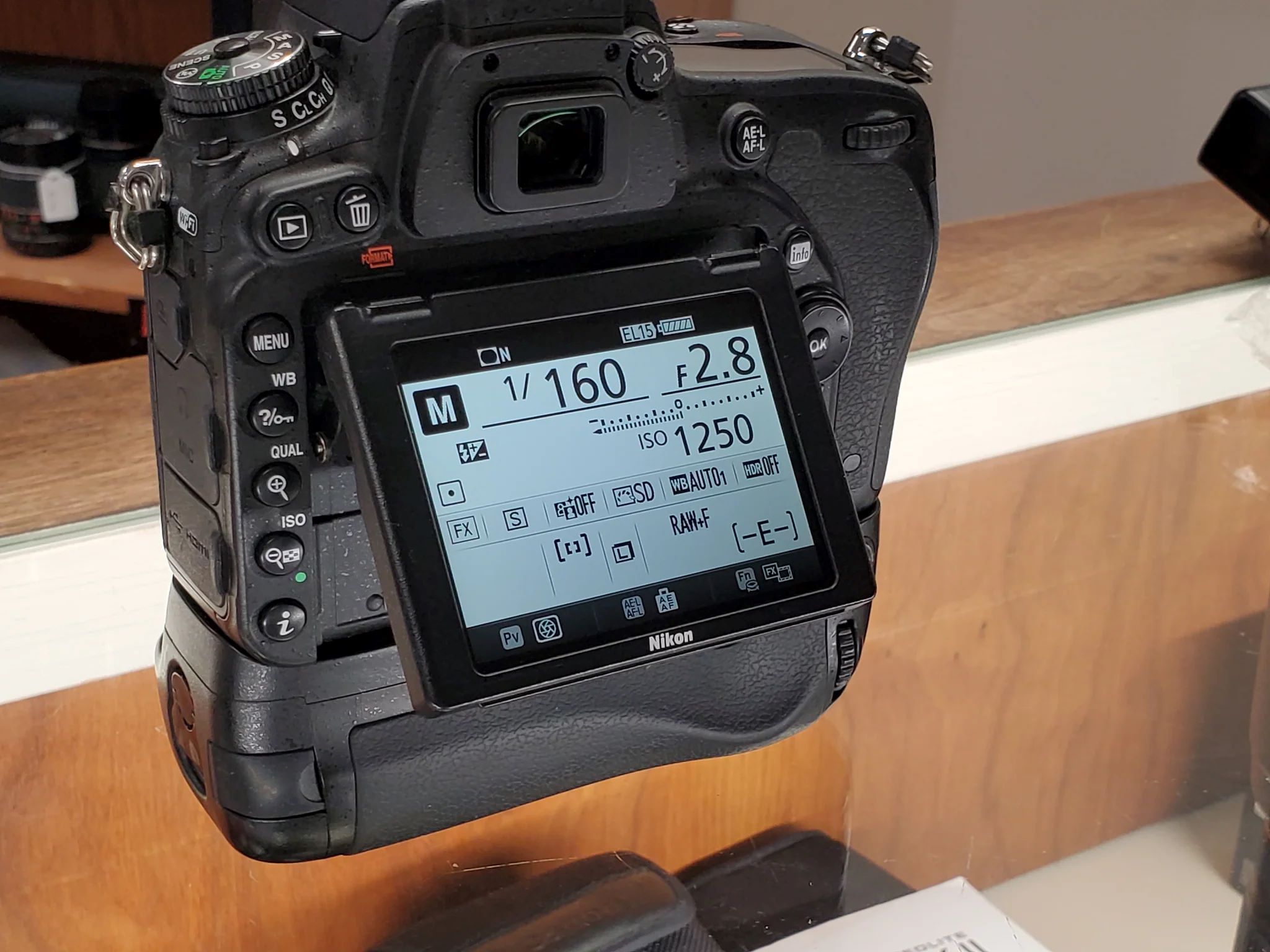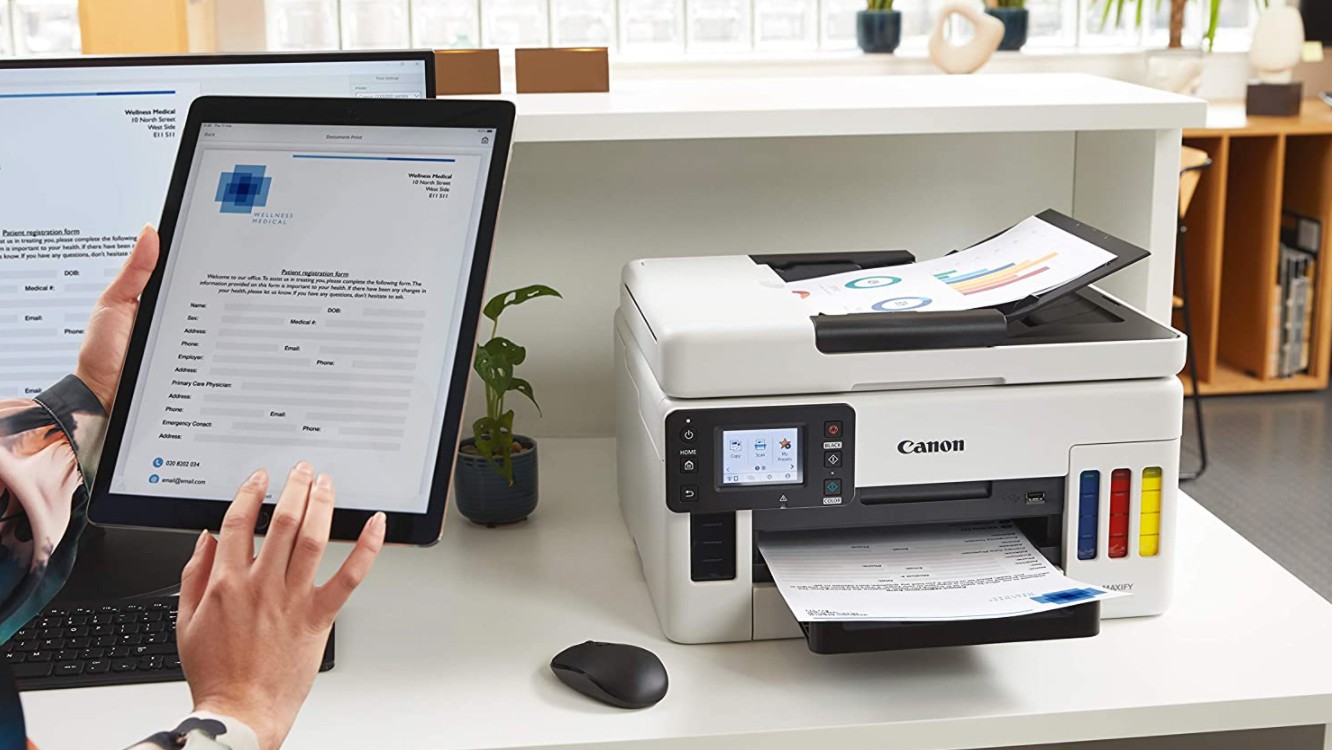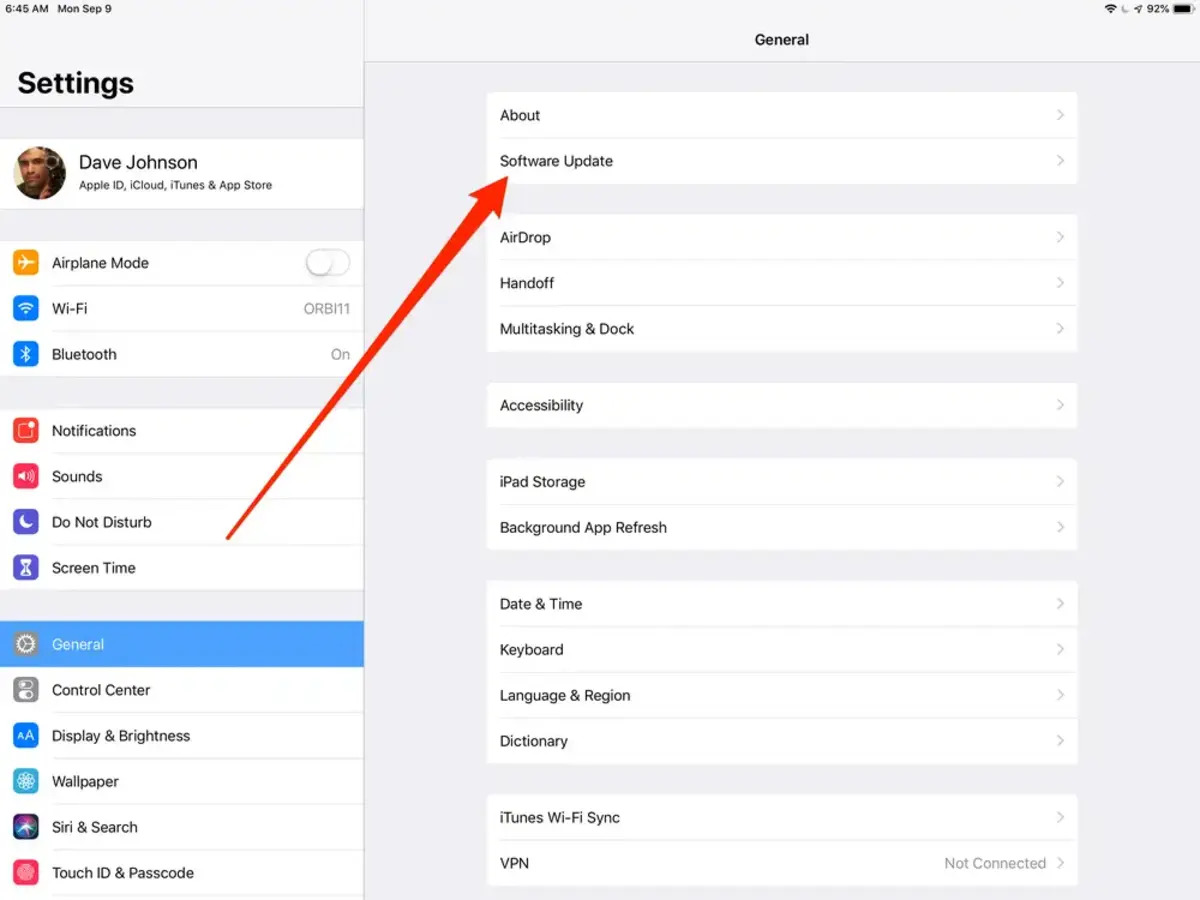Introduction
Welcome to the world of tablets – versatile devices that have become an integral part of our daily lives. As technology advances, tablets continue to evolve, offering a myriad of features and options to suit every individual’s needs. One such option is a Wi-Fi only tablet, a device that relies solely on Wi-Fi connectivity for internet access. In this article, we will explore what a Wi-Fi only tablet is, how it works, its advantages, disadvantages, and help you determine if it is the right choice for you.
In today’s digital age, staying connected is more important than ever. Whether it’s for work, communication, entertainment, or simply staying informed, having reliable internet access is crucial. While most tablets offer cellular connectivity options, such as 4G or 5G, Wi-Fi only tablets provide an alternative for those who primarily use their tablets in areas where Wi-Fi networks are readily available.
The concept of a Wi-Fi only tablet is straightforward – it is a tablet that can connect to the internet exclusively through Wi-Fi networks. In other words, it does not have a built-in cellular modem, requiring the device to be within range of a Wi-Fi signal to access the internet. This means that you can browse the web, stream videos, check emails, and use various online apps and services, as long as you have access to a Wi-Fi network.
To use a Wi-Fi only tablet, you will need to connect to a Wi-Fi network either by entering the network’s password or by connecting to a public Wi-Fi hotspot. Once connected, the tablet will have access to the internet and all its functionalities. It’s important to note that a Wi-Fi only tablet may not be able to connect to the internet in areas where Wi-Fi networks are inaccessible, such as during travel or in remote locations with limited Wi-Fi coverage.
Choosing a Wi-Fi only tablet has its advantages and disadvantages. On one hand, these tablets are often more affordable compared to their cellular counterparts. They also tend to have longer battery life, as the absence of a cellular modem reduces power consumption. Additionally, Wi-Fi is typically faster and more reliable than cellular networks in many situations.
What is a Wi-Fi Only Tablet?
A Wi-Fi only tablet, as the name suggests, is a type of tablet device that relies solely on Wi-Fi connectivity for internet access. Unlike tablets with cellular capabilities, which can connect to the internet using cellular data networks, Wi-Fi only tablets require a Wi-Fi network to access the internet.
At its core, a Wi-Fi only tablet functions similarly to a traditional tablet. It boasts a touchscreen display, runs on a specific operating system (such as Android or iOS), and offers a variety of apps and functionalities. The main difference lies in how it connects to the internet. While cellular tablets can access the web using a SIM card and cellular data, Wi-Fi only tablets utilize Wi-Fi networks to establish an internet connection.
To use a Wi-Fi only tablet, you need to have access to a Wi-Fi network. This can be your home Wi-Fi network, a Wi-Fi network at a public location such as a café or library, or even a Wi-Fi hotspot created by a mobile device or portable router. Once connected to a Wi-Fi network, the tablet can access the internet and perform various online activities such as web browsing, social media usage, email checking, video streaming, and more.
It’s important to note that Wi-Fi only tablets do not require a data plan, as they do not have built-in cellular capabilities. This can be advantageous for those who don’t require constant internet connectivity on their tablets or prefer to rely on Wi-Fi networks that may already be available to them.
Wi-Fi only tablets offer an affordable alternative to cellular tablets. Since they do not include cellular capabilities, the cost of manufacturing and purchasing these devices is often lower. This makes them an attractive option for budget-conscious individuals or those who primarily use their tablets in areas where Wi-Fi networks are readily accessible.
How does a Wi-Fi Only Tablet work?
Understanding how a Wi-Fi only tablet works requires a basic understanding of Wi-Fi technology. Wi-Fi, short for “Wireless Fidelity,” is a wireless networking technology that allows electronic devices to connect to the internet and communicate with each other wirelessly. Wi-Fi networks use radio signals to transmit and receive data, providing internet connectivity without the need for physical cables.
A Wi-Fi only tablet relies on Wi-Fi networks to access the internet. When you turn on your tablet and navigate to the Wi-Fi settings, it will display a list of available Wi-Fi networks in the vicinity. These networks can be secured with a password or open for public access. To connect to a Wi-Fi network, you simply select the desired network from the list and enter the password if required.
Once connected to a Wi-Fi network, the tablet becomes part of that network, and it can transmit and receive data to and from the internet through the Wi-Fi connection. The tablet communicates with the Wi-Fi router using radio signals, allowing it to access the internet and all the online services and applications available to it.
Wi-Fi networks operate on various frequencies, typically in the 2.4 GHz or 5 GHz range. These frequencies provide different levels of coverage and data transmission capabilities. Modern Wi-Fi only tablets are designed to support multiple Wi-Fi standards, such as Wi-Fi 4 (802.11n), Wi-Fi 5 (802.11ac), and Wi-Fi 6 (802.11ax), offering faster speeds, better range, and improved performance compared to older standards.
It’s important to note that the range of a Wi-Fi network can vary depending on factors such as the Wi-Fi router’s power, antenna strength, physical barriers, and interference from other devices. Generally, Wi-Fi networks have a range of a few hundred feet indoors, potentially extending further outdoors.
To ensure the security of user data and protect against unauthorized access, Wi-Fi networks can be encrypted using various security protocols, such as WEP, WPA, or WPA2. When connecting to a secured Wi-Fi network, you will need to enter the correct password to gain access.
In summary, a Wi-Fi only tablet works by connecting to Wi-Fi networks, using radio signals to transmit and receive data to access the internet. By leveraging the existing infrastructure of Wi-Fi networks, these tablets provide a convenient and affordable means of staying connected and accessing online content and services.
Advantages of a Wi-Fi Only Tablet
Wi-Fi only tablets offer numerous advantages that make them a popular choice for many users. Whether you’re a student, a professional, or simply someone who enjoys using tablets for entertainment and browsing, here are some key advantages of opting for a Wi-Fi only tablet:
1. Affordability: Wi-Fi only tablets are generally more affordable compared to cellular-enabled tablets. Since they do not require additional hardware and cellular capabilities, the cost of manufacturing and purchasing these devices is often lower. This makes them a budget-friendly option for individuals who want to enjoy the benefits of a tablet without breaking the bank.
2. Lower monthly costs: Wi-Fi only tablets do not require a data plan, eliminating the need for monthly cellular charges. By relying on Wi-Fi networks for internet access, you can save on monthly expenses and have greater control over your data usage. This can be particularly beneficial for individuals who primarily use their tablets in areas where accessible Wi-Fi networks are readily available.
3. Extended battery life: Wi-Fi only tablets tend to have longer battery life compared to cellular-enabled tablets. The absence of a cellular modem means that the device consumes less power, resulting in extended usage time. This can be advantageous for users who rely on their tablets for extended periods, such as during travel or while away from a power source.
4. Faster and more stable connectivity: Wi-Fi networks are usually faster and more stable compared to cellular data networks. With a Wi-Fi only tablet, you can take advantage of high-speed internet connections offered by Wi-Fi networks, allowing for seamless browsing, streaming, and downloading. This is particularly beneficial for activities that require a stable and fast internet connection, such as video streaming, online gaming, and video conferencing.
5. Wi-Fi availability: Wi-Fi networks are widely available in various public places such as cafes, libraries, airports, and shopping malls. By having a Wi-Fi only tablet, you can easily connect to these networks and enjoy internet access without relying on cellular data or tethering to another device. This provides more flexibility in terms of where and how you use your tablet.
6. Less dependent on cellular coverage: While cellular-enabled tablets rely on cellular network coverage, Wi-Fi only tablets are not dependent on cellular signal strength. This means that you can use your tablet in areas where cellular coverage may be weak or unavailable, as long as there is a Wi-Fi network nearby. This can be advantageous for individuals who frequently travel to remote or rural areas with limited cellular coverage.
In summary, Wi-Fi only tablets offer affordability, reduced monthly costs, extended battery life, faster and more stable connectivity, wider availability of Wi-Fi networks, and independence from cellular coverage. These advantages make Wi-Fi only tablets an attractive choice for users who primarily use their tablets in areas with accessible Wi-Fi networks and do not require constant internet connectivity while on the go.
Disadvantages of a Wi-Fi Only Tablet
While Wi-Fi only tablets offer numerous advantages, there are also some potential drawbacks to consider. Here are a few disadvantages of opting for a Wi-Fi only tablet:
1. Limited internet access: The primary drawback of a Wi-Fi only tablet is the reliance on Wi-Fi networks for internet connectivity. This means that you won’t have internet access in areas where Wi-Fi networks are not available, such as during travel or in remote locations with limited Wi-Fi coverage. This can be inconvenient if you rely heavily on your tablet for online activities while on the go.
2. Dependent on Wi-Fi network quality: The quality and reliability of your internet connection on a Wi-Fi only tablet are primarily dependent on the quality and reach of the Wi-Fi network you are connected to. If you are in an area with a weak or unstable Wi-Fi signal, you may experience slower internet speeds or frequent disconnections. This can hinder your ability to stream videos, engage in video conferencing, or perform other bandwidth-intensive tasks.
3. Security concerns: When connected to public Wi-Fi networks, there is an increased risk of potential security threats, such as data breaches or hacking attempts. Public Wi-Fi networks are often less secure compared to private home or office networks. It is essential to exercise caution while using public Wi-Fi networks and take necessary measures to protect your data, such as using a virtual private network (VPN) for secure browsing.
4. Limited mobility: Wi-Fi only tablets are limited in terms of mobility compared to cellular-enabled tablets. With a cellular tablet, you have the freedom to connect to the internet wherever there is cellular coverage. In contrast, a Wi-Fi only tablet requires you to be within the range of a Wi-Fi network to access the internet. This can be a limitation if you frequently find yourself in areas without easily accessible Wi-Fi networks.
5. Added inconvenience of connecting to Wi-Fi networks: Unlike cellular tablets that automatically connect to available cellular networks, Wi-Fi only tablets require manual connection to Wi-Fi networks. This can be cumbersome if you are frequently moving between different Wi-Fi networks. You may need to enter passwords or perform additional steps to connect, which can be time-consuming and may interrupt your workflow.
It’s important to consider these disadvantages when deciding whether a Wi-Fi only tablet is the right choice for you. If you require constant internet connectivity regardless of location or rely heavily on your tablet for on-the-go usage, a cellular-enabled tablet may be a more suitable option. However, if you primarily use your tablet in areas with accessible Wi-Fi networks and are looking for a more budget-friendly option, a Wi-Fi only tablet can still provide a great user experience.
Is a Wi-Fi Only Tablet Right for You?
Deciding whether a Wi-Fi only tablet is the right choice for you depends on your specific needs, preferences, and usage patterns. Here are some factors to consider when determining if a Wi-Fi only tablet is suitable for you:
1. Internet dependence: Consider how heavily you rely on internet access while using your tablet. If you primarily use your tablet in areas with accessible Wi-Fi networks, such as at home, school, or work, and you don’t require constant internet connectivity while on the go, a Wi-Fi only tablet can meet your needs.
2. Budget considerations: Wi-Fi only tablets are often more affordable compared to cellular-enabled tablets. If you are on a budget or looking to save on monthly costs associated with cellular data plans, a Wi-Fi only tablet can provide a more cost-effective option.
3. Location and mobility: Evaluate your typical usage scenarios and consider where you use your tablet the most. If you are frequently in areas with reliable Wi-Fi coverage, such as urban settings or places with easily accessible Wi-Fi networks, a Wi-Fi only tablet is likely suitable. However, if you travel often or find yourself in areas with limited Wi-Fi access, a cellular-enabled tablet may provide the necessary internet connectivity wherever you go.
4. Data usage: Assess your data usage patterns and requirements. If you primarily use your tablet for activities that can be done using Wi-Fi networks, such as web browsing, email, social media, and streaming videos on Wi-Fi, a Wi-Fi only tablet can fulfill your needs. However, if you have high data requirements or use data-intensive applications that require constant internet access, a cellular tablet with a data plan might be a better choice.
5. Security considerations: Consider your need for secure internet connections. If you frequently connect to public Wi-Fi networks and handle sensitive information, such as banking or personal data, you may want to invest in additional security measures, such as using VPNs or opting for a cellular-enabled tablet with secure cellular data connections.
Ultimately, the decision to choose a Wi-Fi only tablet or a cellular-enabled tablet depends on your individual circumstances and requirements. Evaluating your internet usage habits, budget, location, and security needs will help you determine which option aligns best with your preferences and usage patterns. Remember to weigh the advantages and disadvantages of each option to make an informed choice.
Choosing a Wi-Fi Only Tablet
When it comes to choosing a Wi-Fi only tablet, there are several factors to consider to ensure you get the device that best suits your needs. Here are some key considerations to keep in mind:
1. Operating System: The operating system (OS) of the tablet will determine the user interface and available apps. The most popular tablet OS options are Android and iOS. Android offers a wide range of customization and device options, while iOS provides a seamless integration with other Apple devices.
2. Display Size and Resolution: Consider the screen size and resolution of the tablet. A larger screen provides a more immersive experience, while a smaller one offers portability. High-resolution displays (HD or higher) ensure crisp and vibrant visuals.
3. Processing Power and Memory: Look for a tablet with a powerful processor that can handle multitasking smoothly. Check the RAM and internal storage capacity as well, as these affect the device’s performance and ability to store apps, files, and media.
4. Battery Life: Assess the tablet’s battery life, especially if you plan on using it for prolonged periods. A longer battery life allows for uninterrupted usage without the need for frequent recharging.
5. Connectivity Options: Consider other connectivity features besides Wi-Fi, such as Bluetooth and USB ports. These can expand the tablet’s functionality and enable connectivity with external devices.
6. Camera Quality: If you intend to use your tablet for photography or video calls, look for a tablet with high-quality front and rear cameras. Consider the megapixel count, low-light performance, and video recording capabilities.
7. Additional Features: Evaluate any additional features that are important to you. This could include water resistance, expandable storage, a fingerprint sensor, stylus support, or compatibility with specific accessories.
8. Brand and Reputation: Research and consider reliable brands known for manufacturing high-quality tablets. Check reviews and customer ratings to ensure customer satisfaction and a reliable after-sales service.
9. Budget: Set a budget for your tablet purchase to narrow down your choices. Determine the features and specifications that are essential to you and look for options that fit within your budget range.
10. Try Before You Buy: If possible, visit a physical store to test out different tablets before making a purchase. This allows you to get a feel for the device, assess its user-friendliness, and determine if it meets your specific requirements.
By considering these factors, you can make an informed decision when selecting a Wi-Fi only tablet that aligns with your needs, preferences, and budget. Remember to prioritize the features that are most important to you and choose a tablet that offers a seamless and enjoyable user experience.
Conclusion
Choosing a tablet that best suits your needs and preferences can significantly enhance your digital experience. Wi-Fi only tablets offer a budget-friendly option for individuals who primarily use their tablets in areas with accessible Wi-Fi networks. These tablets provide reliable internet connectivity, extended battery life, and the flexibility to connect to various public Wi-Fi networks.
While Wi-Fi only tablets have their limitations, such as dependence on Wi-Fi networks and potential security concerns on public networks, they remain a popular choice for many users. By evaluating factors such as your internet usage habits, location, budget, and security needs, you can determine if a Wi-Fi only tablet aligns with your requirements.
When choosing a Wi-Fi only tablet, consider factors such as the operating system, display size and resolution, processing power, memory, battery life, connectivity options, camera quality, additional features, brand reputation, and budget. By carefully evaluating these elements and comparing different models, you can find a Wi-Fi only tablet that meets your specific needs and delivers an enjoyable user experience.
Remember, a Wi-Fi only tablet is an excellent choice if you primarily use your tablet in areas with accessible Wi-Fi networks, don’t require constant internet connectivity while on the go, and are conscious of your budget. It offers affordability, extended battery life, faster and more reliable Wi-Fi connectivity, and the convenience of using existing Wi-Fi networks.
Whether you’re a student, professional, or simply someone who enjoys browsing, streaming, and staying connected, a Wi-Fi only tablet can provide the flexibility and features you need. Take the time to research and compare different models, assess your specific requirements, and make a well-informed decision. With the right Wi-Fi only tablet in hand, you can enjoy seamless internet access, entertainment, and productivity on the go.







